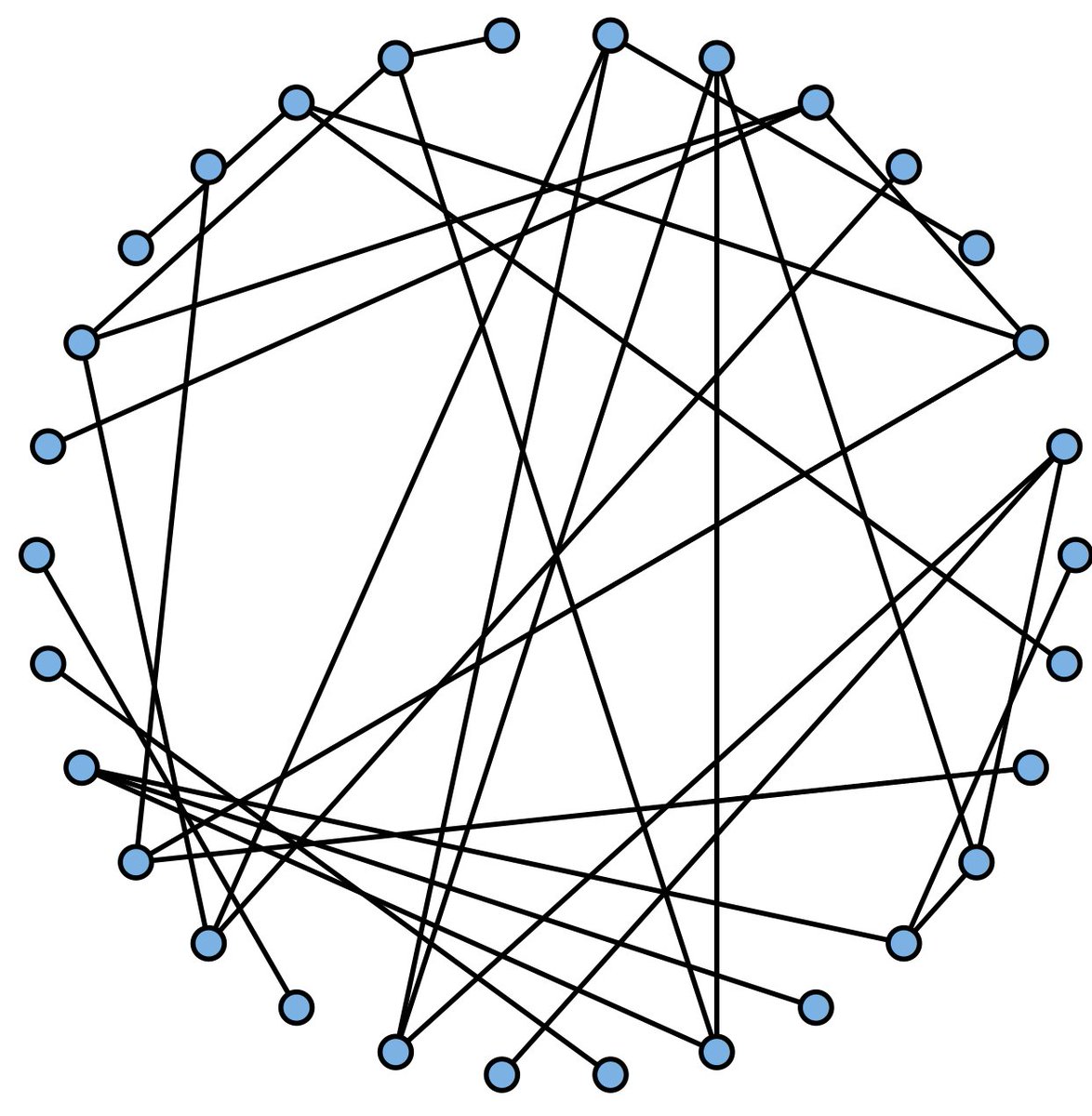opinionator.blogs.nytimes.com/2012/09/17/fri… (by @stevenstrogatz)
jstor.org/stable/2781907
Since the average person can only contribute 1 new infection, you'd think that if the transmission probability p<1, then disease will die out.
So R0 =/= p ave(K) [what you might naturally expect]
Rather R0 = p ave(K^2-K)/ave(K)
Gven that we've found R0, the "herd immunity threshold" should be 1-1/R0. And this is correct if the vaccines are randomly distributed (but not if we can target degree 3 people)
(Note that this often leads to a smaller epidemic than a homogeneous model predicts b/c all those low degree people have a good chance of escaping)
So we would expect that after a first wave with strong interventions, the rebound will be less than a homogeneous model predicts.
We want herd immunity among them, not among the general population.
1) I believe interventions will have a larger impact on higher degree individuals. So the first wave will not be so efficient on getting high degree individuals as a first model would predict.
Points 1 & 2 can be added to a model fairly simply. 3 is a little harder.
I am not convinced.
"I saw a model that rescaled the transmission rate in older individuals" is not an answer to my question.
An epidemic with fairly large interventions in place gets us to herd immunity at a smaller threshold than we'd predict from a homogenous model.



